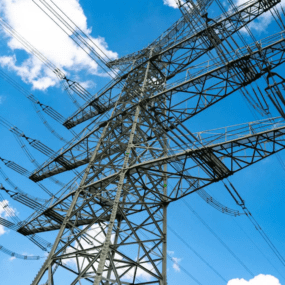How NOAA is helping utilities face intense climate threats
The National Ocean and Atmospheric Administration is supporting improved forecasting and climate resiliency efforts.

The National Ocean and Atmospheric Administration is supporting improved forecasting and climate resiliency efforts.

Sign up for our newsletter
Stay in the loop with all things GridX and beyond.
In late May, the National Ocean and Atmospheric Administration released its annual hurricane forecast. With record-high ocean temperatures and a La Niña weather pattern, the outlook is bleak.
Tropical Storm Alberto, the first named storm of the season, caused deadly flooding in Mexico and Texas in late June. A week later, Hurricane Beryl formed in the Caribbean, becoming the earliest Category 5 hurricane ever recorded. It went on to kill more than a dozen people in the Caribbean and Texas in the following days, and millions lost power.
“Not only is it a large season, we have it as the strongest season we’ve ever put out with a prediction of an 85% chance of above normal season,” Sarah Kapnick, NOAA’s chief scientist, said on the With Great Power podcast. “Everyone needs to be ready for this and take it seriously.”
Utilities are heeding the warning. Intense storms often bring down utility assets, but concurrent extreme weather events can wreak further havoc. In May, a massive wind storm hit Houston.
“It took out energy, it took out infrastructure, and luckily it was cool, but then two weeks later it was in the 90s, 100s,” Kapnick said. Had that wind storm coincided with extreme heat, the impacts on people could have been devastating.
In 2022, EPRI and NOAA entered into a three-year memorandum of understanding aimed at tempering that type of devastation by developing a scientifically based approach to physical climate risk assessment in the energy sector.
The agreement is two-pronged. NOAA is advising EPRI on how its members can integrate climate change in their operations – through reports and training programs – to better protect assets and avoid outages. But the agency is also advising EPRI members on better integrating climate change into its investment decisions. That may seem outside the scope of an agency chiefly focused on meteorology and ocean science, but to Kapnick, it makes perfect sense.
“I’m so proud of this work because I saw it as the first necessary steps that the Electric Power Research Institute needed to be taking along this path to understand climate risk assessments and what to do about it, both from a business resiliency standpoint in your operations, but also in the built infrastructure of utilities,” Kapnick said.
Utilities’ evolving climate risk plans
Kapnick first interacted with utilities while she was conducting her doctoral research on the impacts of declining snowpacks on water markets, including hydropower, in the western United States. Utilities used some of the snowpack data she collected for hydropower planning. But at an industry event in 2009, Kapnick recalled that utility representatives doubted warnings about progressively earlier snowpack melt and declining water supply.
Today, it’s hard to imagine having those doubts, she said. But, she added, this was before drought had changed soil moisture levels and vegetation enough to set up conditions for catastrophic events in Northern California, like the 2018 Camp Fire.
More recently, utilities across the West have begun bolstering internal prediction capabilities.
“This really started after PG&E’s bankruptcy, after the wildfire that they experienced, that they’ve started building up their meteorological teams to understand long-term risk, but also understand short-term risk,” Kapnick said. “So, for example, if you have fire weather, do you continue operations or do you have brownouts in certain places to avoid causing the fire?”
Beyond weather and climate risks
Kapnick is a climate scientist. But she also has experience in finance — specifically in climate risk. Her unique background means she approaches risk mitigation with a deep understanding of the variables that influence climate over time. At NOAA, she helped build snowpack modeling that enables nine-month predictions and turned it into climate-model products for end users like utilities and water managers. These products include data on stream flow, soil moisture, and winds and are designed to provide actionable information for planning.
NOAA is also collaborating with public health agencies to provide predictions and resources related to excessive heat through heat.gov and is working with government, tribal, and academic partners on drought monitoring through the drought.gov portal. In late June, NOAA announced $4.9 million in funding allocated through the Inflation Reduction Act to help improve drought monitoring and prediction in the American West.
But when it comes to protecting utility assets and NOAA’s ongoing work with EPRI, Kapnick said she wants to see utilities developing threat analyses that consider multiple vulnerabilities to their networks — not just how a storm or wildfire could impact a particular asset, but that asset’s vulnerability to a cyberattack as well.
Not having that holistic view compounds risks, she said.
“The fact that those risks are separate from one another means actually the risk of failure is higher than them separately.”
For the full conversation with Sarah Kapnick on how NOAA is working with utilities, listen to her interview on season 3 of With Great Power here.
With Great Power is a show about the people building the future grid, today. It’s a co-production of GridX and Latitude Studios. Subscribe on Apple, Spotify, or anywhere you get your shows.
Read the original article from Latitude Media here.

GridX Nabs a Communicator Award for With Great Power
With Great Power recognized for exceeding industry standards in business-to-business communications.




